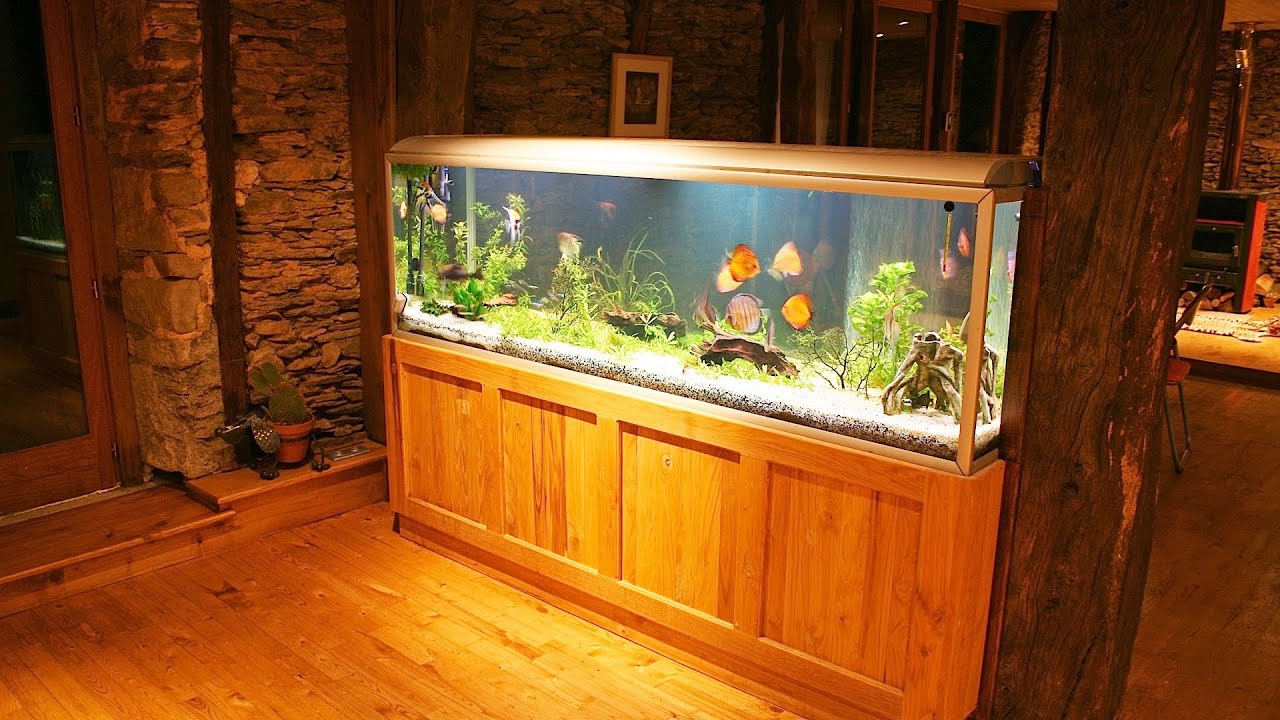How to Maintain a Big Fish Tank | Aquarium Care
Watch more How to Take Care of an Aquarium videos: http://www.howcast.com/videos/509954-How-to-Maintain-a-Big-Fish-Tank-Aquarium-Care
If you want to keep a big aquarium in your house, the same rules apply to a small tank that apply to a large aquarium. They have the same basic needs. You want to keep the water clean. You want to keep the needs of the fish met. With a large aquarium, there are things you have to consider that you don’t have to consider with a small tank. The weight loads of a large tank. Remember, water weights 8.3, 8.4 pounds per gallon, depending on whether it’s fresh water or salt water. Then you have the weight of the aquarium, and the equipment, and the stand. So there’s a lot of weight. A lot of liability. A lot of stress on that floor. So make sure your floor can handle the weight load. If you’re going to go with a large tank, usually the perimeter of a room is much stronger than the middle of a room. That’s where all your strength is. So if you have to have a really large aquarium, and you’re up on a high floor in an apartment or an old building, put it against the wall. Typically it’ll be a lot stronger.
You also want to make sure that large tank is level. When you have a large span, you have a tendency to torque the bottom of the aquarium to even a slight incline of floor, or a decline, could result in even up to a one inch difference of height on one end of the tank versus the other, and that could be catastrophic. That could really twist that bottom panel and result in it cracking, and all the water could rush out.
There’s also a lot of liability with a large tank. If you do have a leak, you have a couple of hundred gallons spilling onto the floor, versus 10 gallons or 20 gallons in a small tank, and that could ruin multiple floors, and water and water damage is insane. So water hitting a hardwood floor, you’re going to have to replace your whole entire floor. Also, the ceiling below. Water and electric don’t mix, so if you have lights in the ceiling below, that could be a potential issue.
So I don’t want to scare you. I mean, if you set up the tank right, the tank should last many, many, many years, and you shouldn’t have problems with leakage. I do recommend waterproofing the inner cabinet. Most big tanks have their filtration residing in the base of the cabinet, so you can prevent a lot of problems by going with a pond liner. If you did have a pipe break or a filter overflow, this rubber pond liner would trap 20 to 30 gallons, and mean the difference between having to replace a floor or not.
You want to keep in mind the electrical in your aquarium. The larger the tank, the larger the impact is on your electric bill. Remember, these filters, they run 24/7. The lights run 12 hours a day. If you have a reef tank, you could easily have 500, 600, 800 watts of light. That’s all going to equate to dollars on your electric bill. So it’s not just the initial purchase, but it’s the ongoing upkeep of the aquarium. The chemicals. The filter pads. The salt for your aquarium, the chemicals, and the replacement cost of the bulbs. In an eight foot tank, it could be $200 to replace the bulbs every eight or nine months. So you want to factor in all these things when you’re picking out an aquarium.
Another thing with large aquariums is I feel you don’t want to go for a tank that’s too big for a room. If it’s a small room, don’t go with a large aquarium. It’s going to look funny in there. So you want the size of the tank to complement the room that it’s going in.



![[ID: nRNa_HkgYFQ] Youtube Automatic](https://bizimtube.com/wp-content/uploads/2021/03/id-nrnahkgyfq-youtube-automatic-236x133.jpg)
![[ID: nKvpMq-k4VE] Youtube Automatic](https://bizimtube.com/wp-content/uploads/2021/03/id-nkvpmq-k4ve-youtube-automatic-236x133.jpg)
![[ID: yhITUFbi7H8] Youtube Automatic](https://bizimtube.com/wp-content/uploads/2021/03/id-yhitufbi7h8-youtube-automatic-236x133.jpg)
![[ID: 1G3UK4EgsIM] Youtube Automatic](https://bizimtube.com/wp-content/uploads/2021/03/id-1g3uk4egsim-youtube-automatic-236x133.jpg)
![[ID: _zHdzEzAt9o] Youtube Automatic](https://bizimtube.com/wp-content/uploads/2021/03/id-zhdzezat9o-youtube-automatic-236x133.jpg)
![[ID: gqgRajnKkBI] Youtube Automatic](https://bizimtube.com/wp-content/uploads/2021/03/id-gqgrajnkkbi-youtube-automatic-236x133.jpg)
![[ID: 5-3fSrQTBxI] Youtube Automatic](https://bizimtube.com/wp-content/uploads/2021/03/id-5-3fsrqtbxi-youtube-automatic-236x133.jpg)
![[ID: ouCtbSdrkWc] Youtube Automatic](https://bizimtube.com/wp-content/uploads/2021/03/id-ouctbsdrkwc-youtube-automatic-236x133.jpg)
![[ID: MgYLCr1GLO8] Youtube Automatic](https://bizimtube.com/wp-content/uploads/2021/03/id-mgylcr1glo8-youtube-automatic-236x133.jpg)
![[ID: vVCcQJpk2H4] Youtube Automatic](https://bizimtube.com/wp-content/uploads/2021/03/id-vvccqjpk2h4-youtube-automatic-236x133.jpg)
![[ID: hCMKysXAbco] Youtube Automatic](https://bizimtube.com/wp-content/uploads/2021/03/id-hcmkysxabco-youtube-automatic-236x133.jpg)
![[ID: fM9J7p32XCA] Youtube Automatic](https://bizimtube.com/wp-content/uploads/2021/03/id-fm9j7p32xca-youtube-automatic-236x133.jpg)